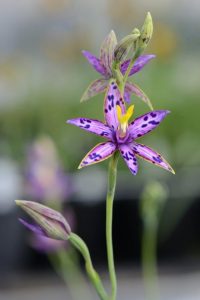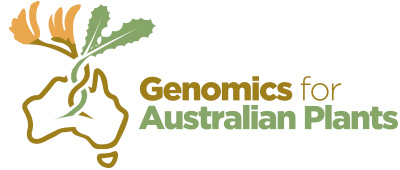Thelymitra variegata (Queen of Sheba orchid)
Aim: Conservation Genomics
Project initiation: Aug 2020
Project lead: Katharina Nargar | Australian Tropical Herbarium (ATH) & National Research Collections Australia (CSIRO)
Mar 2022 update:
The project was ended as the plant material available was not suitable for Genotyping by Sequencing.

Project description:
The Queen of Sheba complex (Thelymitra variegata complex) comprises eight species of terrestrial, food-deceptive orchids with centre of diversity in southwest Australia. The group comprises one nationally threatened species and six species require further study to assess their conservation status and are listed as Priority Flora in Western Australia.
Taxonomic delimitation within the group is exceedingly difficult due to high morphological variability and hybridisation. This greatly hampers assessment of the conservation status of species in the complex and conservation planning. Recent surveys of the group indicate that plant numbers are severely declining due to increasing anthropogenic pressures, which include poaching of plants, loss of habitat due to urban expansion, and very low rates of pollination. As there is no conservation plan for species of the complex endemic in Western Australia, conservation genomic studies are urgently needed to resolve species delimitation, understand genomic diversity, and assess the conservation status of species of this extraordinary group of orchids.
This conservation genomic study aims to clarify taxonomic boundaries within the T. variegata complex, provide insights into its genomic diversity, increase our understanding of morphological variation and levels of genetic invasion through hybridisation. The results of the study will facilitate evidence-based conservation planning including assessments of the conservation status of the priority species. Further, this study will underpin the development of conservation plans for species of this outstanding group of Australian orchids.
